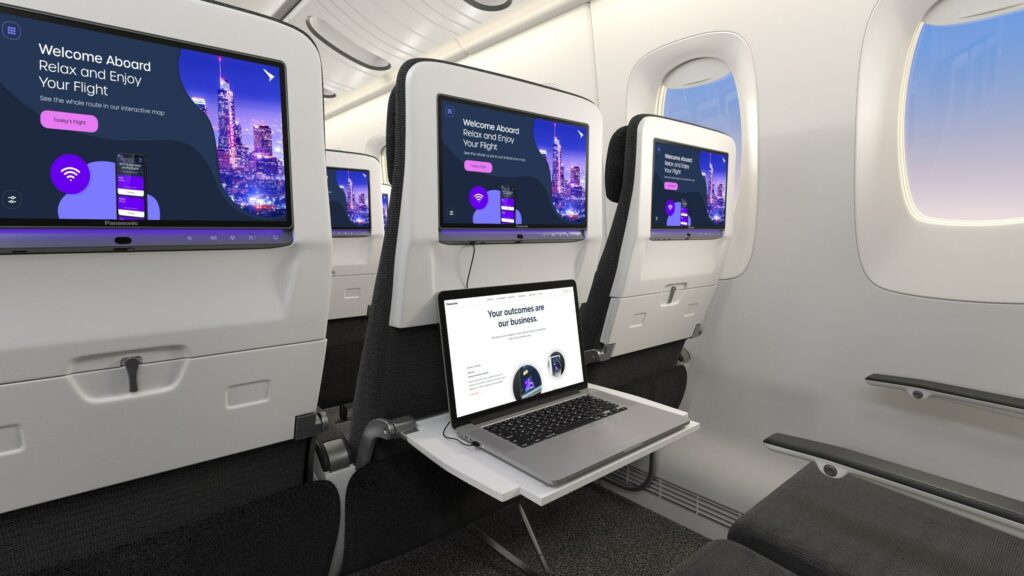
Panasonic Avionics just signed an agreement with United Airlines as its first customer in the Americas for Astrova, its new in-flight engagement (IFE) solution. Pictured above is the Astrova seat-end solution. (Photo: Panasonic)
United Airlines has selected Panasonic Avionics as one of its suppliers to provide upgrades to the passenger experience. This decision, which reflects United’s commitment to a positive in-flight experience for passengers as a part of its United Next plan, will put the latest in-flight entertainment (IFE) technology in many of United’s mainline aircraft.
United Airlines made history in recent months for placing the largest widebody aircraft order by a U.S. carrier in the history of commercial aviation last December. This order was for two types of Boeing jets—the 787 Dreamliner and 737 MAX. When combined with options the carrier can exercise for additional aircraft, this order expands United’s backlog to over 200 new Boeing aircraft alone. Additionally, with hundreds of narrowbody aircraft expected in the coming years and a promise to retrofit all existing A320 and 737 family aircraft by 2025, the carrier is in need of new technology to enhance and modernize the passenger experience.
During the Aircraft Interiors Expo in Hamburg, Germany, United became the first airline in North America to purchase Panasonic’s new Astrova IFE solution. With plans to install the system on select Boeing 787s and Airbus A321XLR aircraft, this agreement marks a significant milestone in both the Astrova program and United’s mission to update the cabins within its fleet. It also follows United’s previous deal to install Panasonic’s X Series and NEXT IFE on various narrowbody and widebody aircraft.
By equipping aircraft with Astrova, United will benefit from several advancements that will help improve the passenger experience while reducing operating costs. The 4K OLED technology of the system, combined with an infinite contrast ratio, will allow for the display of sharper and higher-quality images. Panasonic’s newest Bluetooth technology will be another feature of Astrova, allowing for an immersive audio experience for customers. 100W of DC power will be available to passengers through a USB-C outlet, ensuring that personal electronics can remain charged at any point during the flight.
In the announcement, Ken Sain, CEO of Panasonic Avionics Corporation, highlighted the mutually beneficial nature of the deal. He explained, “Our partnership with United Airlines reflects our shared vision to take the passenger engagement to a whole new level. We are confident that Astrova will connect passengers to United more effectively than any other IFE solution, and we will continue to optimize passenger engagement with a cabin experience that keeps pace with innovation in the consumer technology space. Panasonic Avionics will perpetually update the passenger experience, introducing new products that bring enormous value and a major competitive advantage to United Airlines.”
While Astrova will help improve the passenger experience, it will also help United reduce costs associated with maintenance and operations. A removable peripheral bar will allow United to add new, upgraded features quickly, making the carrier more receptive to new ways to improve the cabin experience. Astrova is also lighter than existing systems, helping the carrier reduce fuel burn.
With United looking to expand its fleet and update existing aircraft, Panasonic’s new Astrova system seems to provide the carrier with a modernized experience for passengers and a maintenance-friendly design that will allow United to innovate the passenger experience further into the future.
Panasonic recently introduced a new global software development center in India. The company plans to invest in state-of-the-art laboratories to test new passenger experiences for a range of aircraft types.